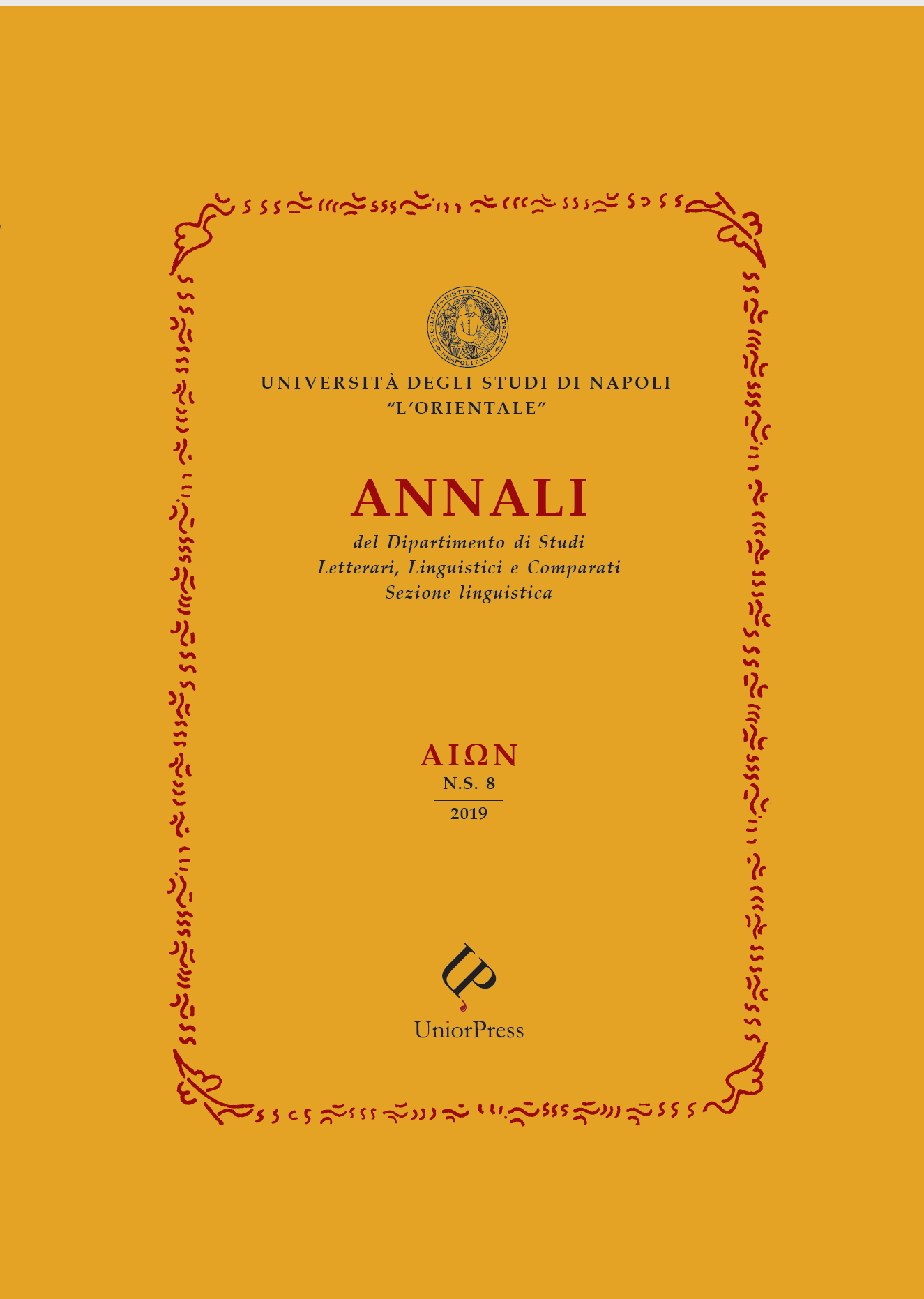The asymmetric path-conflation pattern of go and come verbs in Aymara
Abstract
This paper investigates the basic motion verbs sara ‘go’ and juta ‘come’ in Aymara, an indigenous language of the Andes, within the framework of Talmy’s lexical typology (Talmy 2000). In a crosslinguistic perspective, ‘come’ and ‘go’ are assumed to be deictically complementary and have been represented as a kind of Path-conflating verbs, i.e. verbs that include the deictic component of Path in their lexical semantics, which is respectively the direction ‘toward the speaker’ vs that ‘not toward the speaker’. Data from Aymara show in fact that ‘come’ and ‘go’ exhibit an asymmetrical Path-conflation pattern: ‘come’ does inherently entail deictic motion toward the speaker, whereas ‘go’ indicates a more general motion along a path at a lexical semantic level, expressing Path through morphological (derivational suffixes, case endings), syntactic (spatial NPs, adverbs), and pragmatic contexts.





